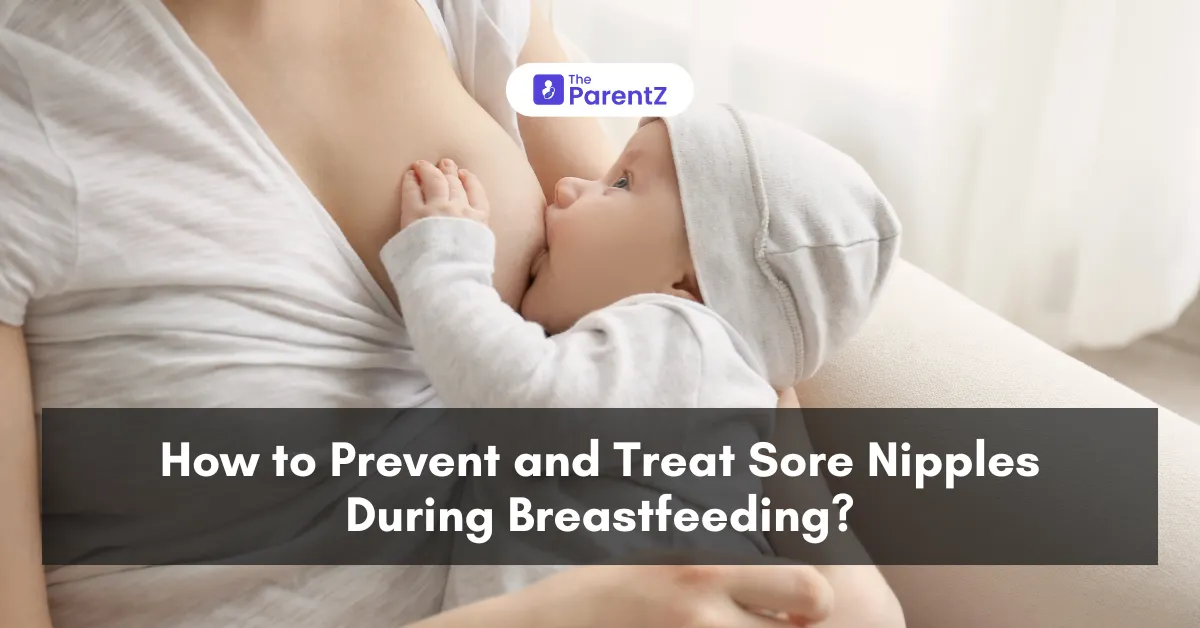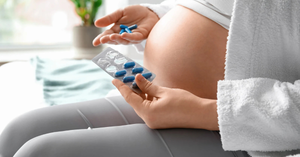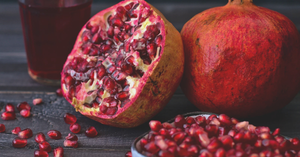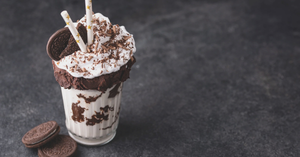Picture this: you're cradling your newborn, ready for another feeding session, but your nipples are so sore that you're dreading the moment your baby latches on. You're exhausted, emotional, and wondering if this is just how breastfeeding is supposed to feel. Let us assure you – it's not, and you're not alone in this experience.
As many as one-third of nursing mothers deal with nipple pain in the first month after birth. While this discomfort is common, it's not something you simply have to endure. Whether you're a first-time mom or a seasoned parent experiencing breastfeeding challenges, this guide will walk you through everything you need to know about preventing and treating sore nipples.
Understanding Sore Nipples
Sore nipples can arise from various factors, but the most prevalent cause is improper latching. When a baby does not latch on correctly, it can lead to excessive friction and pressure on the nipple, resulting in pain. A proper latch means that the baby’s mouth covers not just the nipple but also a big portion of the areola (the dark area surrounding the nipple). This allows for better milk transfer and minimizes discomfort.
Other factors contributing to sore nipples include:
- Flat or Inverted Nipples: These can make it challenging for a baby to latch properly.
- Tongue-Tie: This condition restricts the baby’s tongue movement, affecting their ability to latch effectively.
- Chafing: Friction from nursing pads or clothing can irritate the skin, leading to soreness.
- Engorgement: When breasts become overly full, they can be harder for babies to latch onto, leading to painful feedings.
- Infections: Conditions like thrush (a fungal infection) or bacterial infections can cause significant pain.
- Skin Conditions: Dermatitis or psoriasis on the nipples may also lead to soreness.
Prevention Strategies for Sore Nipples
- Ensure a Proper Latch: The most critical factor in preventing sore nipples is ensuring that your baby latches correctly. Support your breast with your hand, positioning your fingers away from the nipple to encourage a deep latch.
- Vary Nursing Positions: Alternating breastfeeding positions can help alleviate pressure on different areas of the nipple and areola. Consider trying the cradle hold, football hold, or side-lying position. This variation can help prevent soreness by distributing the load differently during each feeding.
- Frequent Feeding: Breastfeeding often helps maintain milk supply and prevents engorgement, which can lead to painful feedings. Allow your baby to nurse as long as they want rather than shortening feeds to "rest" your nipples, as this could affect your milk supply.
- Avoid Soap on Nipples: Using soap can dry out or irritate the skin on your nipples. Instead, rinse with plain warm water and let them air dry after feeding. This practice helps maintain natural moisture levels.
- Wear Comfortable Bras: Choose cotton, non-underwired bras that allow for air circulation and reduce friction against sensitive skin. Avoid bras with plastic backing in nursing pads, as they can trap moisture and increase irritation.
- Change Breast Pads Regularly: If you use breast pads, change them after every feed to keep moisture away from your skin. Opt for pads without plastic backing to enhance breathability.
- Air Dry Your Nipples: After feeding, allow your nipples to air dry before putting on your bra or clothing. Keeping them dry helps prevent tearing and irritation.
- Use Barrier Ointments: Applying medical-grade lanolin or other barrier ointments after breastfeeding can protect the skin and provide relief from soreness. These ointments create a moisture barrier that supports healing without needing to be removed before subsequent feedings.
- Massage Engorged Breasts: If your breasts feel hard due to engorgement, gently hand express some milk before latching your baby. This softens the breast tissue and makes it easier for your baby to latch properly.
- Limit Use of Nipple Shields: While nipple shields can provide temporary relief for sore nipples, they should not be used long-term as they may interfere with proper latching and milk transfer. Consult a lactation consultant if you're considering using them.
Treatment Options for Sore Nipples
1. Proper Latch and Positioning
The first step in treating sore nipples is ensuring that your baby is latching on perfectly. A poor latch can lead to excessive friction and pain.
2. Breastfeeding Techniques
- Start with the Less Sore Side: Begin feeding on the breast that is less sore. This allows your baby to nurse vigorously at first, which can stimulate milk flow before switching to the more painful side.
- Vary Positions: Experiment with different breastfeeding positions, such as the cradle hold, football hold, or side-lying position. This variation can help distribute pressure across different areas of the nipple and areola.
- Gentle Unlatching: When it's time to remove your baby from the breast, carefully release the suction by placing your finger at the corner of their mouth. This technique helps avoid additional irritation to the nipple.
3. Self-Care Practices
- Express Breast Milk: After feeding, express a few drops of breast milk onto your nipples and let them air dry. Breast milk has natural healing properties that can soothe irritation.
- Keep Nipples Dry: Ensure that your nipples are dry between feedings. If you’re using nursing pads, change them frequently to avoid moisture buildup.
- Avoid Irritants: Steer clear of soaps and lotions that may dry out or irritate your skin. Instead, rinse your nipples with warm water and allow them to air dry.
4. Topical Treatments
- Lanolin Cream: Apply medical-grade lanolin cream to soothe sore nipples. This product creates a protective barrier and helps retain moisture without needing to be removed before breastfeeding.
- Aquaphor or Gel Pads: These can also provide relief from soreness and protect against friction from clothing.
- Cold Compresses: Using a cold compress on your breasts after nursing can alleviate swelling and relieve discomfort. Make sure to place a cloth between your skin and the ice pack to avoid frostbite.
5. Addressing Infections
If you suspect an infection (such as thrush), it’s crucial to seek medical attention promptly. Treatment may involve:
- Antifungal Creams: Topical antifungal treatments may be prescribed for both you and your baby if necessary for yeast infections.
- Antibiotics: If a bacterial infection is confirmed, some antibiotics may be required.
6. Breast Shells
Consider using breast shells over your nipples while wearing a bra. These devices protect sore areas from friction with clothing while promoting air circulation, aiding in healing.
7. Consulting Professionals
If nipple pain persists despite trying these treatments, consult your lactation consultant or healthcare provider for further evaluation. They can assess for underlying issues such as tongue-tie or other anatomical concerns that may be contributing to your discomfort.
8. Avoid Nipple Shields Unless Necessary
While nipple shields can provide temporary relief, they should only be used under professional guidance as they may affect milk supply and latch if used long-term.
Conclusion
Breastfeeding is a journey; like any journey, it might have some challenging moments. Don't be discouraged if you experience nipple soreness – it's usually temporary and fixable. The key is to address any issues early and don't hesitate to seek help. Remember, taking care of yourself is equally important as taking care of your baby, and comfortable breastfeeding makes the experience better for both of you.








Be the first one to comment on this story.